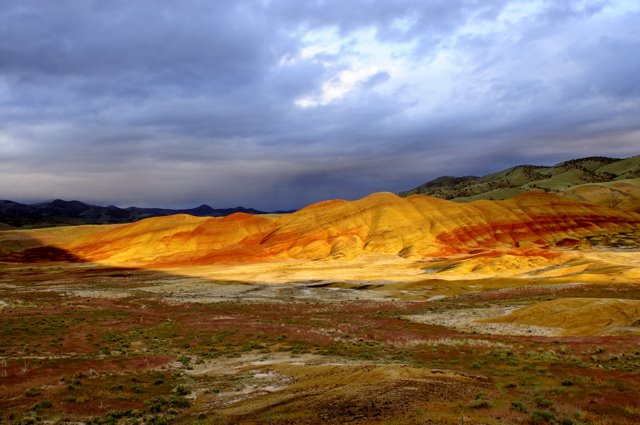Something you should know as you continue to learn how to use your camera, is what your built in light meter really does. These are really remarkable tools these days but you still need to be aware of their limitations.
Back in the early days of light meters, scientists determined that of all the light provided by the sun, only an average of about 18% of that light was reflected from any surface. Photographers refer to the tone of this reflected light as 18% gray. Ansel Adams took this concept much further but for me to go deeper into this here would take many pages that I am sure you don't want to read just now. So for now, just accept that something near 18% of available light is actually reflected back to your eye, and to your camera.
Because of this, most but not all built light meters are designed to calculate apertures and shutter speeds for your automatic exposures based on an average light reading of 18% gray. Some camera manufacturers have determined to use a slightly different value but for all practical purposes the idea is the same. You can see this in your photos. Have you ever taken a shot of a bright object such as a snow or beach scene only to find your image looking gray rather than white? You can try this if you want by setting your camera to auto everything and shooting a picture of a piece of white paper or some other bright object.
This is why your point and shoot camera may have special scene modes for things like portraits, beach, snow, landscapes, and so on. The manufacturer has decided to help you properly adjust your exposures by attempting to provide clues as to the kind of light scene you might be shooting in. If your camera doesn't have these features, you can still make corrections if it has an exposure lock feature.
In this instance you move your camera as close as possible to the subject you are trying to photograph, letting the meter read light directly from the subject, activate your exposure lock and then recompose your photograph and shoot.
Digital SLR users have more control over this, as do many of the more elaborate (expensive) point and shoot cameras. Continue learning how to use your camera by spending some time experimenting with this. Adjust your scene modes and white balance settings until you feel comfortable with the results and where to find the menu options. You will find that your photos will not be as dark and gray, but the colors will be richer and more true to what you actually see with your eye.
Please send comments if this article was helpful to you or if you would like information about other topics.
If you are looking for books about how to use your camera click this Book Store link to see what is available. Need a Camera? This Camera Store has the the best choices available on the internet.
You can also visit my own photography website at Dwains Picks to see some of my work.
Thanks for visiting and I hope you will check this site often.

No comments:
Post a Comment